Yield Curve to Bring Back the Fed
US yield curve chatter should return soon. Both popular measures of the US yield curve (10 year yield minus 2 year yields and 5y-3y) are nearest their zero level in over a month. As US diffusion indices revert above the 50 level and stabilizing US-China rhetoric helps push Fed cut expectations to the 2nd half of 2020, this is the time to watch the yield curve. Why?
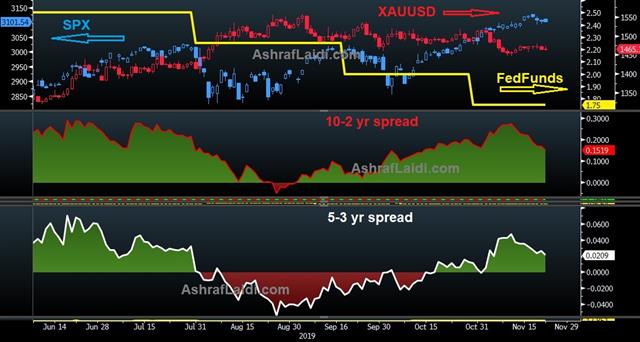
First, the reason the yield curve steepened (re-entered positive territory) from late August til now is the three rate cuts from the Fed -- Fed Funds rate graph (yellow) shows atop both yield curves measures.
As Fed pauses from easing, short-term yields begin to edge higher, while longer-term yields run out of steam (on renewed macro doubts) to the extent that the gap between long and short term rates shrinks gradually back towards zero. See the latest graphs of the 10-year yield and oil in today's IMT.
The rest of the chart suggests diminishing Fed easing stimulus combined with continued lack of tangible progress on the US-China trade front (if China has not agreed to any deal over the past 18 months, it will not do so anytime soon), surging uncertainty from the impeachment hearings and inevitable signs of tensions within Republicans towards their president, will all bring back Fed easing expectations as early as February-March 2020. The Fed may have succeeded in diverting attention away from rate cuts, but it will not stop a renewed return of yield curve inversion (or flattening) from market's attention.
For traders of SPY, SPX, DOW and other major indices attempt a retest of the recent highs after a rare 2-day decline. Yet the overlay between indices and that mysterious ratio remains in play.

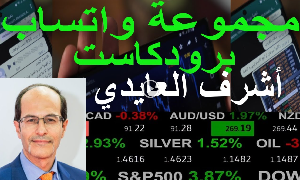


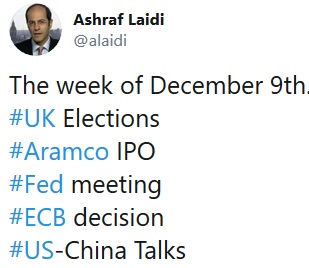

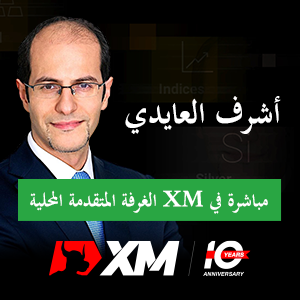
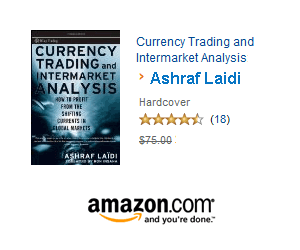

Gold trading signals are powerful tools used by traders to identify opportunities in the gold market. Whether you're a beginner or an experienced investor, understanding how to use these signals can significantly improve your trading performance.
In this guide, you'll learn what gold trading signals are, how they work, and how to use them to make informed trading decisions.
What Are Gold Trading Signals?
Gold trading signals are buy or sell recommendations for gold, based on various forms of analysis. These signals are designed to help traders enter and exit the market at optimal times.
They are typically generated through:
• Technical analysis
• Fundamental analysis
• Market sentiment
• Algorithmic models
Some signals are shared by expert analysts, while others come from automated trading platforms or signal providers.
If you're looking for professional gold signals, check out this trusted provider:??? Gold Signals by Gold Pattern
Types of Gold Trading Signals
1. Technical Signals
These rely on price charts and indicators like:
• Moving Averages (MA)
• Relative Strength Index (RSI)
• Bollinger Bands
• MACD
?? Example: "Buy signal triggered when the price crosses above the 200-day moving average."
2. Fundamental Signals
These are based on macroeconomic factors such as:
• Inflation and interest rates
• Central bank policies
• U.S. dollar strength
• Geopolitical risks
?? Example: "Sell gold as the Federal Reserve signals a rate hike."
3. Sentiment-Based Signals
These consider how other traders feel about the market:
• COT (Commitment of Traders) reports
• Retail trading data
• News and media sentiment
?? Example: "Bullish signal due to increased hedge fund interest in gold futures."
How to Use Gold Trading Signals
To use gold signals effectively:
1 Confirm the signal using your own analysis.
2 Check the trend and market context.
3 Use stop-loss and take-profit levels for risk management.
4 Avoid over-reliance on any single signal—diversify sources.
?? Tip: Combine gold signals with a solid gold trading strategy for better results.
Where to Find Gold Trading Signals
You can get gold signals from:
• Trading platforms like MetaTrader or TradingView
• Premium signal services like [urlhttps://gold-pattern.com/en]Gold Pattern[/url]
• Financial news and trading communities
• Automated trading bots
Before subscribing to any signal service, check their:
• Accuracy history
• Transparency
• User reviews
Final Thoughts
Gold trading signals can help you stay ahead in the market—but they work best when used as part of a complete trading plan. Learn how to interpret and validate signals before making any trades.
?? Want a proven strategy to trade gold? Check out our full Gold Trading Strategy Guide.
FAQs About Gold Trading Signals
Q: Are gold trading signals reliable??A: They can be—but always verify signals before trading.
Q: Are there free gold signals??A: Yes, but premium services usually offer more accurate and timely insights.
Q: Can beginners use gold signals??A: Absolutely, but it’s important to understand how they work first.
Here are some of the greatest stock traders of all time, known for their unique strategies and massive success:
1. Jesse Livermore (1877-1940) – The Pioneer of Trading
Key Achievements:
? Turned a small $1,000 stake into $100 million (adjusted for inflation).
? Made a fortune shorting the 1929 market crash.
? Wrote Reminiscences of a Stock Operator– a must-read for traders.
Strategy:
Trend following & speculation
Momentum-based trading
Short selling in bear markets
2. Warren Buffett (Born 1930) – The Value Investing King
Key Achievements:
? CEO of Berkshire Hathaway, worth over $100 billion.
? Consistently beat the market for over 60 years.
? Invests in companies like Apple (AAPL), Coca-Cola (KO), and American Express (AXP).
Strategy:
Buy undervalued stocks and hold them long-term.
Focus on strong fundamentals (earnings, management, moat).
Avoid speculation and short-term trading.
3. George Soros (Born 1930) – The Forex & Stock Market Genius
Key Achievements:
? Made $1 billion in a single day shorting the British pound in 1992.
? Founder of Quantum Fund, returning 30% annually for decades.
? Uses global macro investing to trade based on economic trends.
Strategy:
Big bets on macroeconomic trends.
Short selling currencies and stocks.
Heavy use of leverage for high-risk, high-reward trades.
4. Paul Tudor Jones (Born 1954) – The Market Crash Predictor
Key Achievements:
? Predicted and profited from the 1987 stock market crash.
? Made 125% return in a single year for his hedge fund.
? Uses a mix of technical and fundamental analysis.
Strategy:
Momentum trading & trend following.
Macro-based trading (inflation, interest rates, economic cycles).
Risk management through stop-losses and position sizing.
5. Jim Simons (Born 1938) – The Quant Trading Master
Key Achievements:
? Founder of Renaissance Technologies, with an annual return of 66%.
? Uses algorithmic trading & machine learning to analyze markets.
? Known as the "quantitative trading genius".
Strategy:
Mathematical & statistical models for trading.
No reliance on traditional fundamentals or emotions.
Data-driven and algorithmic execution.
Which Style Suits You?
best stock strategy For all trader types
If you love charts & trends: Jesse Livermore, Paul Tudor Jones
If you prefer fundamentals & long-term growth: Warren Buffett
If you like big macroeconomic bets: George Soros
If you prefer data-driven strategies: Jim Simons
Investment is the process of allocating money into assets with the goal of generating returns over time. The right investment strategy depends on risk tolerance, time horizon, and financial goals.
1. Stock Market Investments
• Stocks: Ownership in companies; potential for high returns but with risk.
• ETFs & Index Funds: Diversified funds tracking the market (e.g., S&P 500).
• Mutual Funds: Professionally managed funds pooling investors' money.
• Dividend Stocks: Pay regular income while offering capital appreciation.
2. Fixed-Income Investments (Lower Risk)
• Bonds: Loans to governments or companies with fixed interest payments.
• Certificates of Deposit (CDs): Bank deposits with fixed returns.
• Treasury Securities: Government-backed low-risk investments.
3. Alternative Investments
• Real Estate: Rental properties or REITs (Real Estate Investment Trusts).
• Commodities: Gold, silver, oil—used for diversification.
• Cryptocurrency: High-risk, high-reward digital assets like Bitcoin.
• Private Equity/Venture Capital: Investing in startups and private businesses.
4. Passive vs. Active Investing
• Passive Investing: Buy and hold for long-term gains (e.g., index funds).
• Active Investing: Frequent buying/selling to maximize short-term profits (e.g., trading).
[urlhttps://stockstrategy.net]best stock strategy[/url]
and Investment Strategies
1 Long-Term Growth: Invest in strong assets for decades.
2 Income Investing: Focus on dividends and bonds for steady cash flow.
3 Risk Diversification: Spread investments across different asset classes.
4 Trend & Swing Trading: (Your focus) Trade based on price movements and technical patterns.
Stock investment can be approached in several ways, depending on your risk tolerance, time horizon, and strategy. Here are some core strategies:
1. Long-Term Investing (Buy & Hold)
• Objective: Invest in strong companies and hold for years to benefit from long-term growth.
• Best for: Investors who want passive growth with minimal trading.
• Examples: S&P 500 index funds, blue-chip stocks (Apple, Microsoft, etc.).
2. Dividend Investing
• Objective: Focus on stocks that pay regular dividends for passive income.
• Best for: Investors looking for steady returns and compounding growth.
• Examples: Dividend Aristocrats (Coca-Cola, Johnson & Johnson).
3. Growth Investing
• Objective: Invest in companies with high revenue and earnings growth potential.
• Best for: Investors willing to take higher risks for higher returns.
• Examples: Tech stocks (Nvidia, Tesla) or emerging sectors (AI, EV).
4. Value Investing
• Objective: Buy undervalued stocks based on fundamental analysis.
• Best for: Investors who prefer buying solid companies at a discount.
• Examples: Warren Buffett’s approach—stocks with low P/E ratios and strong fundamentals.
5. Trend & Swing Trading (Your Area of Interest)
• Trend Trading: Capture long-term market trends using moving averages & technical indicators.
• Swing Trading: Short- to medium-term trades based on price swings and technical setups.
• Best for: Active traders who monitor charts & market movements.
The job of a financial advisor is to create a personalized financial plan based on each client's income, long-term goals, and financial situation. It may include a budget and a strategy for saving and long-term investing. Depending on the client, it may include recommendations for life insurance, a college savings plan, a portfolio of investments, and more.
Advisors may steer their clients toward specific investments, such as certain mutual funds. If they are also registered traders, they may execute trades in the financial markets by proxy for their clients. In such cases, they may receive compensation by the sponsor.
Registered financial advisors may follow either of two standards:
The fiduciary standard requires them to act in the best interests of the client in recommending investments. They are compensated only by their clients.
The suitability standard requires them to recommend investments that are suitable to the client's situation. They may receive payment from companies for recommending their products.
Stephen Rischall, CFP®, CRPC https://stockstrategy.net/
Stock Strategy
Stock trading Strategy
1080 Financial Group, Los Angeles, CA
If your financial advisor is a broker, the answer is yes. Brokers are paid commissions based on the products they sell and are oftentimes incentivized to sell certain products over others. When you purchase a mutual fund with a sales load, part of that additional expense is used by the mutual fund company to pay a commission to the advisor. Additionally, most mutual funds charge a 12b-1 fee as part of their expense ratio collected each year. Part of that fee goes toward paying the broker a trailer commission, so long as the client remains invested in the fund.
In contrast, if your financial advisor is a fee-only, fiduciary advisor, then they do not receive commissions or compensation from outside parties.
How Financial Advisors Earn Trailer Fees
Mutual funds pay financial advisors ongoing trailer fees, ranging from 0.25% to 1% per year of the amount invested. The fees are intended to motivate financial advisors to recommend that their clients invest in their mutual funds.
As long as the client remains invested in the fund, the fund pays the financial advisor the percentage fee.
How Financial Advisors Earn Load Fees
Mutual funds charge their investors front-load fees when they buy into the fund and back-load fees when they leave it. Every time an investor buys or sells shares of the fund, they are charged one of these fees.
A financial advisor receives a small share of both of these fees. It is termed a contingent deferred sales charge by the mutual fund company.
How Do Financial Advisors Get Paid?
A financial advisor may get paid in one of several ways. If it is not immediately clear, the client should ask.
A fee-only fiduciary advisor is paid only by the client.
A "fee-based" financial advisor may be paid by both the companies that sponsor investments the advisor recommends and by the client.
A commission-based advisor is paid only by the companies that sponsor investments the advisor recommends. The service is free to the client.
What Percentage Do Financial Advisors Charge?
If a financial advisor charges a flat annual fee, the average cost is 1% to 3% per year of the assets in the account. That generally covers most advisory services, investment research, and trading.
The client may choose to be billed hourly fees.
Which choice is better depends on the amount of service you expect from an advisor. If you want frequent contact with an advisor and frequent changes to your investments, the flat fee might be best. If you want help drawing up a long-term financial plan but expect to leave your investments alone for the long haul, the hourly fee may cost you less. https://stockstrategy.net/
Stock Strategy
Stock trading Strategy
Is It Worth It to Pay a Financial Advisor?
How confident are you in your ability to handle your finances independently? If you're not all that confident, a session with a financial advisor can get you on a long-term spending and savings plan that is feasible and makes sense for you and your family, given your current income and future goals.
The advisor will want to know if you have sufficient life insurance to protect your family; whether you're saving enough towards retirement; whether you're a homeowner or want to be, and much more.
This may turn into a long-term relationship with a financial advisor, or not. Your plan should change with your circumstances over time.
Before we get to how money disappears, it is important to understand that regardless of whether the market is rising (a bull market) or falling (a bear market), supply and demand drive the price of stocks. And it's the fluctuations in stock prices (and the points at which you buy and sell shares) that determine whether you make money or lose it.
Buy and Sell Trades
If you purchase a stock for $10 and sell it for only $5, you will lose $5 per share. You may believe that that money goes to someone else, but that isn't exactly true. It doesn't go to the person who buys the stock from you.
For example, let's say you were thinking of buying a stock at $15, and before you do so, the stock price falls to $10 per share. You decide to purchase at $10, but you didn't gain the $5 depreciation in the stock price. Instead, you got the stock at the current market value of $10 per share.
In your mind, you may think that you saved $5, but you didn't actually earn a $5 profit. However, if the stock then rises from $10 back to $15, you will have a $5 (unrealized) gain. https://stockstrategy.net/
Stock Strategy
Stock trading Strategy
The same is true if you're holding stock and its price drops, leading you to sell it for a loss. The person buying it at that lower price—the price you sold it for—doesn't necessarily profit from your loss. That's because their entry point is the lower price and they must wait for the stock to rise above that level before making an unrealized (or realized) profit.
No one, including the company that issued the stock, pockets the money from your declining stock price. The money reflected by changes in stock prices isn't tallied and given to some investor. The changes in price are simply an independent by-product of supply and demand and corresponding investor transactions.
Short Selling
There are investors who place trades with a broker to sell a stock at a perceived high price with the expectation that it will decline. This is called short-selling.
If the stock price falls, the short seller profits by buying the stock at the lower price and closing out the trade. The net difference between the sale and buy prices is settled with the broker.
Although short-sellers profit from a declining price, they're not taking money from you in particular when you lose on a stock sale. Rather, they're conducting independent transactions and have just as much of a chance to lose or be wrong on their trade as investors who are long (own) the stock.
In other words, short-sellers profit on price declines, but it's a separate transaction from bullish investors who bought the stock and are losing money because the price is declining.
So the question remains: Where did the money go?
Implicit and Explicit Value
The most straightforward answer to this question is that it actually disappeared into thin air, due to the decrease in demand for the stock, or, more specifically, the decrease in enough investors' favorable perceptions of it to move the price down by selling.
But this capacity of money to dissolve into the unknown demonstrates the complex and somewhat contradictory nature of money. Yes, money is a teaser—at once intangible, flirting with our dreams and fantasies, and concrete, the thing with which we obtain our daily bread.
More precisely, this duplicity of money represents the two parts that make up a stock's market value: the implicit and explicit value. https://stockstrategy.net/
Stock Strategy
Stock trading Strategy
Implicit Value
On the one hand, value can be created or dissolved with the change in a stock's implicit value, which is determined by the personal perceptions and research of investors and analysts.
For example, a pharmaceutical company with the rights to the patent for the cure for cancer may have a much higher implicit value than that of a corner store.
Depending on investors' perceptions and expectations for the stock, implicit value is based on revenues and earnings forecasts.
If the implicit value undergoes a change—which, really, is generated by abstract things like faith and emotion—the stock price follows. A decrease in implicit value, for instance, leaves the owners of the stock with a loss in value because their asset is now worth less than its original price. Again, no one else necessarily receives the money; it simply vanishes due to investors' perceptions.
Explicit Value
Now that we've covered the above somewhat unreal characteristic of money, we cannot ignore how money also represents explicit value, which is the concrete value of a company.
Referred to as the accounting value (or book value), the explicit value is calculated by adding up all assets and subtracting liabilities. So, this represents the amount of money that would be left over if a company were to sell all of its assets at fair market value and then pay off all of the liabilities, such as bills and debts.
Without explicit value, the implicit value of the company would not exist. Investors' interpretation of the financial health and performance of a company is based on its explicit value. Explicit value is t
The highest temperature recorded on Earth has been measured in three major ways: air, ground, and via satellite observation. Air measurements are used as the standard measurement due to persistent issues with unreliable ground and satellite readings. Air measurements are noted by the World Meteorological Organization (WMO) and Guinness World Records among others as the standard to be used for determining the official record. The current official highest registered air temperature on Earth is 56.7 °C (134.1 °F), recorded on 10 July 1913 at Furnace Creek Ranch, in Death Valley in the United States.[1] For ninety years, a former record that was measured in Libya had been in place, until it was decertified in 2012 based on evidence that it was an erroneous reading. This finding has since raised questions about the legitimacy of the 1913 record measured in Death Valley, with several meteorological experts asserting that there were similar irregularities. The WMO has stood by the record as official pending any future investigative results. If the current record were to be decertified then the holder would be a tie at 54.0 °C (129.2 °F), recorded both at Furnace Creek and in Kuwait.
Several unverified temperatures that exceed the current record have also been recorded. These include historical claims that were never authenticated due to the equipment available at the time and unverified scientific claims. There are also disproven amateur readings that have been posted on social media showing evidence of extreme temperature.
Best Stock Strategy
Stock trading Strategy
History
Thermometer reading at Furnace Creek Ranch (July 2005)
The standard measuring conditions for temperature are in the air, 1.5 metres (4 ft 11 in) above the ground, and shielded from direct sunlight.[2] Global surface temperatures as a whole have been monitored since the 1880s when record keeping began.[3] According to the World Meteorological Organization (WMO), the highest registered air temperature on Earth was 56.7 °C (134.1 °F) in Furnace Creek Ranch, California, located in Death Valley in the United States, on 10 July 1913.[1][4][5] This record was surpassed in 1922 by a reading of 57.8 °C (136.0 °F), registered on 13 September 1922, in ?Aziziya, Libya.
Ninety years later, this record was decertified, making the former reading in Death Valley the world's highest official temperature again. The decertification of the former record in Libya has since cast doubt on the validity of the 1913 recording.[6] If the 1913 record were to be decertified, the highest established recorded air temperature on Earth would be 54.0 °C (129.2 °F), also recorded in Death Valley on 20 June 2013, and in Mitribah, Kuwait on 21 July 2016.[7] There have since been higher readings of 54.4 °C (129.9 °F) in August 2020 and July 2021, both at Furnace Creek, that are pending validation. https://stockstrategy.net/
Stock Strategy
Measurements have also been taken in two other ways via ground and satellite readings. Temperatures measured directly on the ground may exceed air temperatures by 30 to 50 °C (54 to 90 °F).[12] The theoretical maximum possible ground surface temperature has been estimated to be between 90 and 100 °C (194 and 212 °F) for dry, darkish soils of low thermal conductivity.[13] While there is no highest confirmed ground temperature, a reading of 93.9 °C (201.0 °F) was allegedly recorded in Furnace Creek Ranch on 15 July 1972.[14] Temperature measurements via satellite also tend to capture the occurrence of higher records but, due to complications involving the satellite's altitude loss (a side effect of atmospheric friction), these measurements are often considered less reliable than ground-positioned thermometers.[15] Satellite measurements of ground temperature taken between 2003 and 2009, taken with the MODIS infrared spectroradiometer on the Aqua satellite, found a maximum temperature of 70.7 °C (159.3 °F), which was recorded in 2005 in the Lut Desert, Iran. The Lut Desert was also found to have the highest maximum temperature in 5 of the 7 years measured (2004, 2005, 2006, 2007, and 2009). These measurements reflect averages over a large region and so are lower than the maximum point surface temperature.[
The Dow Jones Industrial Average (DJIA), Dow Jones, or simply the Dow (/'da?/), is a stock market index of 30 prominent companies listed on stock exchanges in the United States.
The DJIA is one of the oldest and most commonly followed equity indexes. Many professionals consider it to be an inadequate representation of the overall U.S. stock market compared to a broader market index such as the S&P 500. The DJIA includes only 30 large companies. It is price-weighted, unlike stock indices, which use market capitalization. Furthermore, the DJIA does not use a weighted arithmetic mean.https://stockstrategy.net/
The value of the index can also be calculated as the sum of the stock prices of the companies included in the index, divided by a factor, which is currently (as of November 2021) approximately 0.152. The factor is changed whenever a constituent company undergoes a stock split so that the value of the index is unaffected by the stock split.
First calculated on May 26, 1896,[2] the index is the second-oldest among U.S. market indices, after the Dow Jones Transportation Average. It was created by Charles Dow, co-founder of both the The Wall Street Journal and the Dow Jones & Company, and named after him and his business associate, statistician Edward Jones. The word "industrial" in the name of the index initially emphasized the heavy industry sector[dubious – discuss], but over time stocks from many other types of companies have been added to the DJIA.
Stock Strategy
The index is maintained by S&P Dow Jones Indices, an entity majority-owned by S&P Global. Its components are selected by a committee. The ten components with the largest dividend yields are commonly referred to as the Dogs of the Dow. As with all stock prices, the prices of the constituent stocks and consequently the value of the index itself are affected by the performance of the respective companies as well as macroeconomic factors.
The Dow Jones Industrial Average (DJIA), Dow Jones, or simply the Dow (/'da?/), is a stock market index of 30 prominent companies listed on stock exchanges in the United States.
The DJIA is one of the oldest and most commonly followed equity indexes. Many professionals consider it to be an inadequate representation of the overall U.S. stock market compared to a broader market index such as the S&P 500. The DJIA includes only 30 large companies. It is price-weighted, unlike stock indices, which use market capitalization. Furthermore, the DJIA does not use a weighted arithmetic mean.https://stockstrategy.net/
The value of the index can also be calculated as the sum of the stock prices of the companies included in the index, divided by a factor, which is currently (as of November 2021) approximately 0.152. The factor is changed whenever a constituent company undergoes a stock split so that the value of the index is unaffected by the stock split.
First calculated on May 26, 1896,[2] the index is the second-oldest among U.S. market indices, after the Dow Jones Transportation Average. It was created by Charles Dow, co-founder of both the The Wall Street Journal and the Dow Jones & Company, and named after him and his business associate, statistician Edward Jones. The word "industrial" in the name of the index initially emphasized the heavy industry sector[dubious – discuss], but over time stocks from many other types of companies have been added to the DJIA.
Stock Strategy
The index is maintained by S&P Dow Jones Indices, an entity majority-owned by S&P Global. Its components are selected by a committee. The ten components with the largest dividend yields are commonly referred to as the Dogs of the Dow. As with all stock prices, the prices of the constituent stocks and consequently the value of the index itself are affected by the performance of the respective companies as well as macroeconomic factors.
the best stock Trading strategies are based on our unique chart pattern
trading strategy to trade all stocks, entry/exit points and money management rules.
and can be executed by a trader
to help the individual trader to make high-quality trading decisions.
in short time it is possible to learn stock trading techniques and practice a stock trading strategy until it is mastered.
Use our chart patterns to enter and exit trades
It’s suitable for most traders
Time flexible trading.
High profits. trading strategy allows traders to enter early, as there is no waiting for breakout.
best suited to the trading styles of position traders ,swing traders, very short-term traders (known as scalpers),
trend traders focus on the overall trend and range traders will focus on the short-term
the best stock trading strategy to explore the markets and get into the daily habits of a trader.
the stock trading strategy is simple
how to build and apply a Stock Trading Strategy From setting entries, exits, price targets and stop-loss levels
Once you’ve mastered these 5 simple patterns, you’ll be able to spot opportunities that most traders will pass by.
This video teaches you how to get there, fast.
there are 5 chart patterns 2 of them are completely new
and other 3 patterns used in new way
the 5 patterns cover and explain all market movements approximately
5 Trading Strategies is useful for all level of financial market analysts, the student, traders and investor
The best guide for successful trading
All what you need to understand price behavior in financial markets in easy way
Very clear with more than 200 real chart example
You can create your trading signals by yourself
Can learn this strategy easily
In few days you can learn it and by practice you will be professional
Understanding the price behavior and trading strategy together
Apply on all financial markets and on all timeframes
Read more on Stock Strategy https://stockstrategy.net/